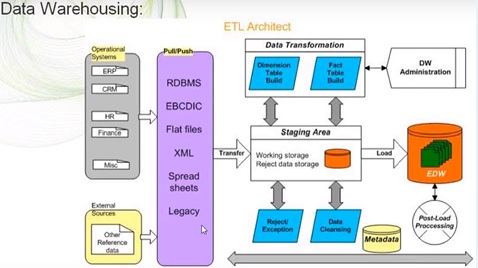QlikView 12.10 SR4 Certification Online Training
A data warehouse is a subject-oriented, integrated, time varying non-volatile, collection of data in support of the management’s decision-making process.
QlikView Online Training Course Content
1) What is QlikView?
How does QlikView differ from traditional BI?
Associative user experience
Technology
Adoption path
Getting QlikView
Navigating the document
Slicing and dicing your data
Changing the view
2) The technology and components behind QlikView
The way the data flows
When QlikView use expands
Create content
Reload, publish, and distribute content
Consume content
3) Preparing the workspace
Setting up the folder structure
Creating the QlikView document
Creating the app
The requirements
Constructing the data model
Creating the dashboard tab
4) Data Sources
Using ODBC and OLE DB drivers
Accessing custom data sources
Reading table files
Extracting data from MS Access
The resulting data model
Loading a table file
The resulting script
QVD and QVX files
Loading an Inline table
5) Data Modeling
Creating the dimensional model
Dimensional models in QlikView
6) The associative data model
Guidelines for table associations
How associations are created
Avoiding data model conflicts
The Table Viewer window
Table information
Field information
Table Preview
Table viewer menu
7) Styling U
Design requirements
The Document Properties window
The Sheet Properties dialog
Setting the object properties
Working with list boxes
The Multi Box
The Current Selections Box
Adding a Bookmark Object
Aligning and resizing sheet objects
Creating and applying a default color map
8) Building Dashboards
User types
Creating the Analysis sheet
Creating the new Dashboard sheet
Creating the Reports sheet
Other charts
9) Scripting
The Script Editor
Script statements
Conditional functions
Dealing with different data types
Debugging script
Standardizing and organizing script
Re-using scripts
Managing file locations and connection strings
10) Data Modeling Best Practices
Data consistency
Dealing with dimensions without facts
An alternative approach
Dealing with facts without dimensions
Reducing storage requirements
Design challenges of data modeling
The master calendar
A final note on data modeling
11) Basic Data Transformation
Changing the source table structure
12) Advanced Expressions
Using variables
Using the TOTAL qualifier
The Aggr function
Conditional functions
A tip on copying expressions
13) Set Analysis and Point In Time Reporting
The magic of Set Analysis
Point In Time Reporting
Comparative analysis with alternate states
Always validate
14) Advanced Data Transformation
Data architecture
Loading data already stored in QlikView
Aggregating data
Sorting tables
The Peek function
Merging forces
Dealing with slowly changing dimensions
Ordering, peeking and matching all at once
Incremental loads
15) More on Visual Design and User Experience
Creating a consistent QlikView UI
Additional interactivity
16) Security
Hidden script
Section access
Document-level security
Sheet-level security




